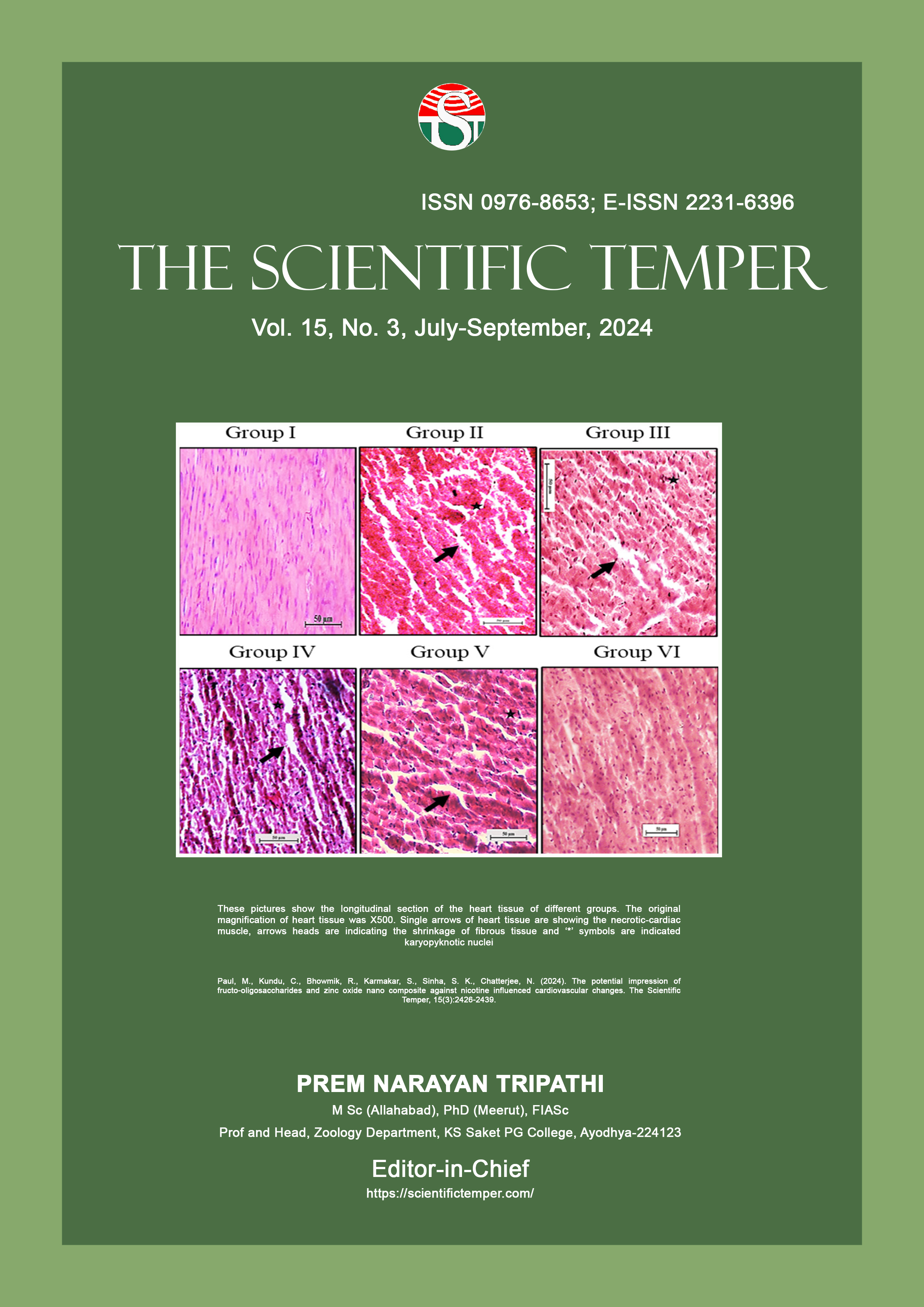Brower blowfish nash secured stochastic neural network based disease diagnosis for medical WBAN in cloud environment
Downloads
Published
DOI:
https://doi.org/10.58414/SCIENTIFICTEMPER.2024.15.3.62Keywords:
Wireless Body Area Networks, Cloud, Brouwer Fixed Point, Blowfish Nash Equilibrium, Stochastic Neural NetworkDimensions Badge
Issue
Section
License
Copyright (c) 2024 The Scientific Temper

This work is licensed under a Creative Commons Attribution-NonCommercial-ShareAlike 4.0 International License.
The trending technology in Wireless Sensor Networks (WSN) is to improve the healthcare system by using Wireless Body Area Networks (WBANs). Implantable Sensor and wearable sensors are inexpensive technology, which are designed to track the body signals and to get intermediate physical activity status. This is considered as an unremarkable choice for continuous health monitoring. In recent years, various routing protocols had been designed to provide reliable data transmission in WBAN. However, many of these protocols are not focused more on security aspects such as data confidentiality and data integrity in medical data transmission. And also, the energy efficient communication methods have significantly vulnerable to various attacks due to the lack of computationally efficient authentication and authorization process. To rectify the drawbacks of existing system a new approach Brower Blowfish Nash-secured Stochastic Neural Network-based (Brower BNSNN) is proposed for medical data transmission through WBAN in cloud environment. The Brower BNSNN method is designed to perform data collection, compression, encryption/decryption and anomaly detection for medical WBAN disease diagnosis in cloud environment. First, distinct numbers of sensor nodes that are attached in the bodies of multiple patients collected for further validation and anomaly detection. Secondly Fixed Point-based compression is performed in the cloud by the cloud user. The sensor nodes compress their sensed data into WBAN messages and sent to cloud server for further processing and from this data confidentiality and data integrity are ensured. Third step is Blowfish Nash Equilibrium-based encryption and decryption is applied to the compressed data to ensure security during the communication between devices or cloud server. Finally, Stochastic Neural Network-based anomaly detection model is designed to perform anomaly detection via authorization process. The designed network performs two-stage authorization such as validating sub-keys and checking kernel process attacks and network logs attacks. Simulations are performed to measure and validate the performance metrics in terms of data confidentiality, data integrity, disease diagnosis accuracy, authentication, in Health Monitoring System.Abstract
How to Cite
Downloads
Similar Articles
- S. Udhaya Priya, M. Parveen, ETPPDMRL: A novel approach for prescriptive analytics of customer reviews via enhanced text parsing and reinforcement learning , The Scientific Temper: Vol. 16 No. 05 (2025): The Scientific Temper
- N. Anbarasi, K. Anitha, S. Hemalatha, A study on energy sum of dominating sets in East Indian states , The Scientific Temper: Vol. 16 No. 04 (2025): The Scientific Temper
- S. TAMIL FATHIMA, K. FATHIMA BIBI, Early diagnosis of cardiac disease using Xgboost ensemble voting-based feature selection, based lightweight recurrent neural network approach , The Scientific Temper: Vol. 16 No. 06 (2025): The Scientific Temper
- Nida Syeda, Kishore Selva Babu, Exploring the role of digital humanities in the centralization of knowledge production: Clusters, networks, or echo chambers , The Scientific Temper: Vol. 15 No. 04 (2024): The Scientific Temper
- Deepika S, Jaisankar N, A novel approach to heart disease classification using echocardiogram videos with transfer learning architecture and MVCNN integration , The Scientific Temper: Vol. 15 No. 04 (2024): The Scientific Temper
- K. Mohamed Arif Khan, A.R. Mohamed Shanavas, Energy efficient techniques for iot application on resource aware fog computing paradigm , The Scientific Temper: Vol. 16 No. 02 (2025): The Scientific Temper
- Y. Mohammed Iqbal, M. Mohamed Surputheen, S. Peerbasha, Swarm intelligence-driven HC2NN model for optimized COVID-19 detection using lung imaging , The Scientific Temper: Vol. 16 No. 03 (2025): The Scientific Temper
- Arvind Kumar Tiwari, STABILITY IN THE EQUILIBRIUM POSITION OF AN EXTENSIBLE CABLE-CONNECTED TWO SATELLITE SYSTEM UNDER PERTURBATIVE FORCE IN CIRCULAR ORBIT , The Scientific Temper: Vol. 9 No. 1&2 (2018): The Scientific Temper
- Kanthalakshmi S, Nikitha M. S, Pradeepa G, Classification of weld defects using machine vision using convolutional neural network , The Scientific Temper: Vol. 14 No. 01 (2023): The Scientific Temper
- Jayaganesh Jagannathan, Dr. Agrawal Rajesh K, Dr. Neelam Labhade-Kumar, Ravi Rastogi, Manu Vasudevan Unni, K. K. Baseer, Developing interpretable models and techniques for explainable AI in decision-making , The Scientific Temper: Vol. 14 No. 04 (2023): The Scientific Temper
<< < 4 5 6 7 8 9 10 11 12 13 > >>
You may also start an advanced similarity search for this article.
Most read articles by the same author(s)
- M. Iniyan, A. Banumathi, The WBANs: Steps towards a comprehensive analysis of wireless body area networks , The Scientific Temper: Vol. 15 No. 03 (2024): The Scientific Temper



